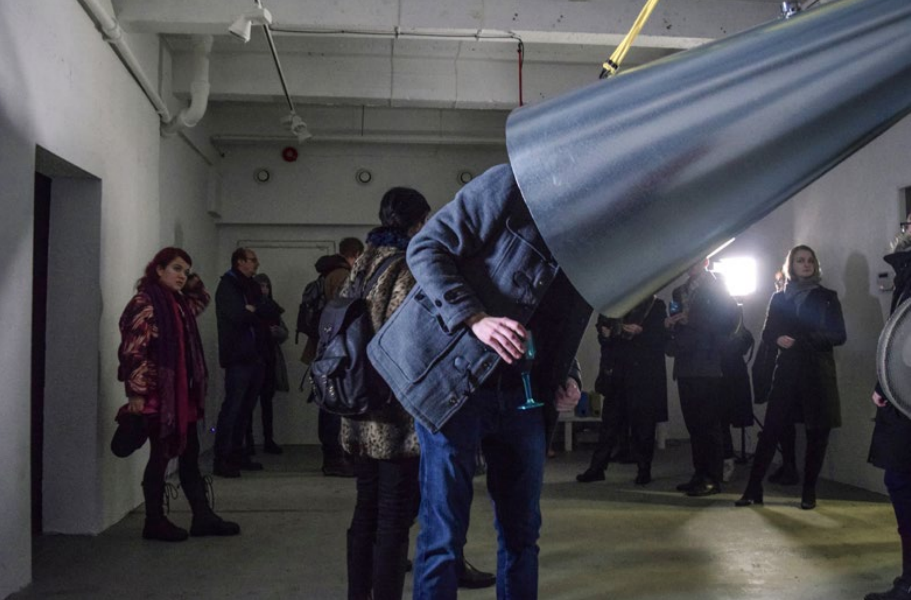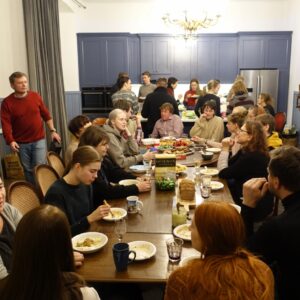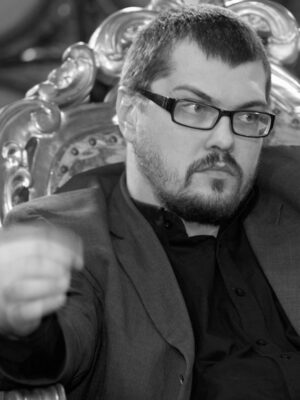Curatorial Studies

Pildil: Vent Space avapidu ja Marta Vaariku performance LOVER. Foto: Kaisa Maasik
Since autumn 2017, the Art History and Visual Culture MA programme at the Estonian Academy of Arts has offered a specialization in Curatorial Studies. The institution of curator as we know it today appeared on the art field in the 1960s and 1970s. From the mid-1990s, it has been possible to study the field in curatorial studies programmes at universities and art institutions. This is thus an academically young field that consistently resists being formalized into a standard and universal educational programme. Most curators operating on the art field believe that curating is not a profession that can be learned at a school. Yet the curatorial studies programme can still help a student towards becoming a curator. One can also enter the Curatorial Studies module without any prior art or art history training: having a BA degree, and an interest in (contemporary) art and the desire to work with artists is enough.
What is curating and what does a curator do?
To put it simply, curation in the context of art mainly means the preparation of exhibitions. But it is also much deeper than that: curating is staging a connection between artworks – the curator does not curate artworks, but the space between them. Curating is thus about exploring and empowering that space. Curatorship relates to everything involving the intermediation of the meeting between art, artwork and viewer; it may be the realization of a conceptualized exhibition idea in cooperation with artists, and it may be a presentation of an artist and artwork from a specific aspect; it may be art historiography or essay writing in a spatial form, it may be holding a dialogue with an artist in the context of preparing a solo exhibition, and may include organization of the production and funding of an artwork. The practice of curating can also extend to many other things, e.g. video programmes, festivals, artist residencies, books, conferences and so on. Institutional curators also curate programmes of art institutions such as museums, galleries, and art halls. A curator should also be capable, if necessary, of creating new institutions and changing the methods for art presentation through introducing new exhibition formats. It is just important to remember that although the curator is the only creative position on the art field alongside artists, curators are never artists, but rather solely in the service of art and artists.
What and how do we teach?
Study at the MA level largely falls into two categories. During the first semester, students of the MA programme at the Institute of Art History and Visual Culture study together, getting an idea of the theory and basic problems in art history and curatorial theory. Together they also make an acquaintance with the key concepts in art sociology, visual culture and critical theory and semiotics. Starting from the second semester, students choose an area of specialization and focus on their speciality. In the Curatorial Studies module’s lectures and seminars, the student acquires knowledge about the history of the speciality and how it is positioned on the art field, its key theoretical, ethical and political problems. The student acquires the crucial abilities of reading and analyzing exhibitions through practical experience in Estonia and beyond. We organize study trips to neighbouring countries as well as to major international art events (for example, we have visited the Venice Biennale and Manifesta in Palermo). Students also learn about the practical side of curating – the principles of writing a grant application, exhibition installation and design – and acquire fundamental knowledge about operating a gallery. Starting in autumn 2018, Curatorial Studies MA students and MA students from the Faculty of Fine Arts have run a project called Vent Space, offering a public outlet for EAA students. We cooperate with the EAA Gallery and, via various elective courses, with students in art, design and architecture programmes. We collaborate with local art institutions and are looking for possibilities to allow our university students to undergo practical training there, supervised by leading curators. Central theoretical support for curatorial students for conceptualizing their own projects can be found in the Critical Theory Seminar, which deals with the most acute topics at the nexus of art and theory.
Master’s thesis
The master’s thesis in the Curatorial Studies MA programme at the Institute of Art History and Visual Culture may be a theoretical study of a curatorship-related issue, or a practical work (curator project) accompanied by a explanatory paper laying out the theoretical background.


